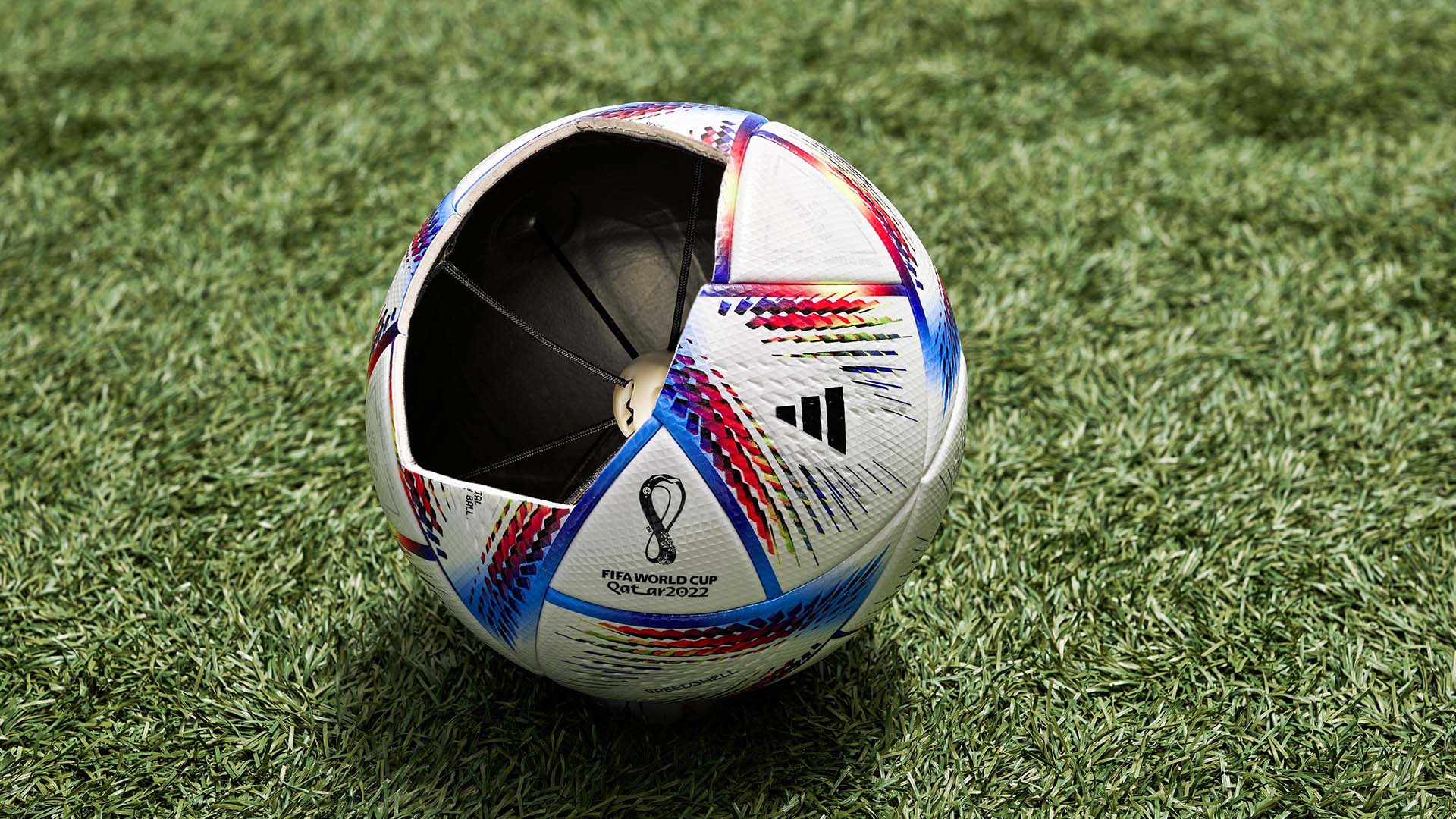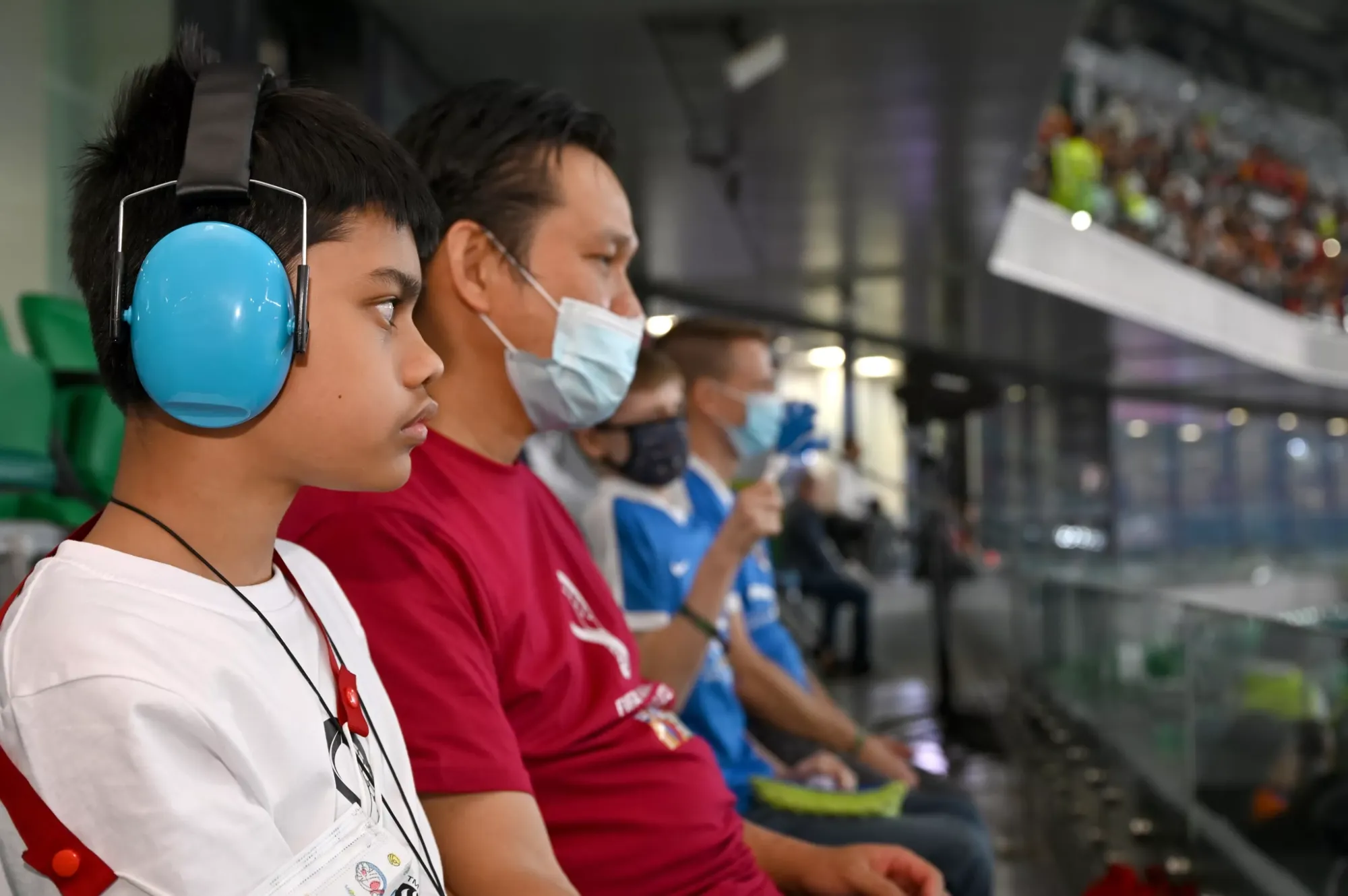The coolest tech innovations that made it to the World Cup 2022

The FIFA World Cup 2022 taking place in Qatar is arguably one of the biggest sports gathering in the world, to be watched by at least 5 billion people from all over the world, according to FIFA President Gianni Infantino.
With the competition featuring some of the most advanced technologies in the game both for the players on the pitch and the fans in the stands, this has prompted many conversations surrounding the link between football and technology, and how technology has continued to shape our beloved game of football.
In this article, Techloy features some of the remarkable new technologies that have been introduced into the game for the 2022 Qatar World Cup and how it will assist match officials, teams, and facility officials in making the right calls with regards to the game.
Sensor match ball
The official match ball for Qatar 2022 dubbed, Al Rihla, which means “the journey” in Arabic is made exclusively with water-based inks and glues and is the most technologically advanced World Cup ball so far.
Inside it, the ball features an Adidas Suspension System, which includes an unnoticeable 500Hz inertial measurement unit motion sensor that sends out data 500 times per second. Powered by a battery, the sensor provides unprecedented insight into every element of the movement of the ball. The balls’ data also assists in detecting unclear touches to improve the quality and speed of VAR (Video Assistant Referees) decision-making and semi-automated offside technology.

Advanced Stadium Cooling Technology
With temperatures in the Middle East region reaching as high as 50ºC (122ºF) in the summer, the competition was scheduled to take place in the winter (Nov/Dec) when temperatures are expected to be between 21ºC and 26ºC degrees (70ºF to 79ºF), as a result to the intense heat during the summer months.
To further increase the comfort of international players and fans, seven of the eight ultra-modern stadiums of the 2022 FIFA World Cup Qatar feature advanced cooling technology to keep the stadium temperatures at about 68° F.

Semi-Automated Offside Technology
A Semi-Automated Offside Technology has also been introduced to enable video and on-field match officials to make faster, more accurate, and more reproducible offside decisions.
According to FIFA, the new technology uses 12 dedicated tracking cameras mounted underneath the stadium's roof to track the ball and up to 29 data points of each player, 50 times per second, calculating their exact position on the pitch. The 29 collected data points include all limbs and extremities that are relevant for making offside calls.
By combining the limb- and ball-tracking data and applying artificial intelligence, the new technology provides an automated offside alert to the video match officials inside the video operation room whenever an offside scenario happens.
The video match officials then validate the proposed decision by manually checking the automatically selected kick point and the automatically created offside line, before informing the on-field referee. This process happens within a few seconds and means that offside decisions can be made faster and more accurately.
A 3D animation that shows the best possible perspectives for an offside situation, is also rendered by the exact same positional data points.

The FIFA Player App
The FIFA Player App will provide the opportunity for each player to an insight into their individual player-performance data shortly after each match.
Developed by a team of football performance analysts with input from professional players, the app intelligently tracks different metrics of individual players including; enhanced football data metrics, physical performance metrics, and enhanced Football Intelligence metrics.
These metrics capture data on the distance covered at various speed thresholds, the number of actions above 25km/h and the maximum speed displayed on positional heat maps. It will also include the phase of play, line-breaking events, receiving locations and pressure applied to the player in possession of the ball.

Video Assistant Referee System
A video assistant referee (VAR) system is a support tool for officials. Used at the 2018 FIFA World Cup, the system has been implemented in over 100 competitions worldwide since then. The system supports the decision-making process of the referee in four match-changing situations: Goals and offences leading up to a goal, penalty decisions and offences leading up to a penalty decision, direct red card incidents only (not second yellow card/caution), and mistaken identity.
The VAR team is made up of 4 top FIFA video match officials, 3 replay operators with access to 42 broadcast cameras to provide the best angles, all supporting the referee from a centralised video operation room (VOR) located in Doha, Qatar. All host broadcaster camera feeds from the eight stadiums are provided to the VOR through a fibre-optic network. The on-field referee at each stadium talks to the VAR team via a sophisticated fibre-linked radio system.
Throughout a match, the video assistant referee team constantly checks for clear and obvious errors related to these four match-changing situations. The VAR team communicates with the referee only for clear and obvious mistakes or serious missed incidents.
FIFA has developed a VAR information system to inform the broadcasters, commentators and infotainment about the different steps of the review process, including the reason for and outcome of the review, via a networked touch tablet. The VAR information system will also be used to automatically create VAR-specific graphic templates for TV and the giant screen in the stadium.

Facial-recognition technology
The entire event — including attendees — will be monitored by 15,000 cameras equipped with facial-recognition technology. The surveillance is part of Qatar's efforts to look out for security threats such as terrorism and hooliganism during the tournament, which is expected to draw over 1 million visitors, per AFP.
The surveillance network will be run by the Aspire Command and Control centre, the technical hub that oversees operations for the eight stadiums where the matches will be held and will be able to send commands like opening a door or all the doors in a stadium from there.
The control centre will have eyes on all nearby metro trains and buses. Experts from Qatar University have also developed drones that can provide estimates of the number of people on the streets.

Sensory Room
The sensory viewing room provides a calm and secure environment for people with sensory access requirements. It caters mainly for children and young adults with autism or learning difficulties, among other sensory access requirements.
The sensory room, which is located in one of the stadium’s sky boxes, offers visitors the chance to watch live football in a specially-lit space that aims to alleviate any anxiety they may feel while attending a large-scale event. The purpose of the room is to offer people an enjoyable match-day experience in a location that feels safe and secure. It features soft furnishings, toys and other activities which were installed by the Qatar Institute for Speech and Hearing.

Bonocle and Feelix Palm
To enable visually-impaired fans to enjoy the 2022 FIFI World Cup, Bonocle and Feelix Palm are used. Bonocle is the world’s first Braille entertainment platform. By using transcoding functionalities and Bluetooth technologies, individuals with visual impairments can experience the excitement of the World Cup just like everyone else.
Feelix Palm, a palm communicator with tactile features, will also be used in Qatar. By using electric impulses, Feelix Palm offers braille-like messages to the visually impaired without restricting their physical movement or hearing.

Sustainability
The competition also highlights a move towards sustainability. Some of the sustainable adoptions include:
- Sustainable design principles like reused materials, locally produced materials, and materials made with recycled content were prioritized for the construction process
- A totally dismountable stadium made out of repurposed shipping containers and modular steel frames

- The use of energy-efficient, longer-lasting, non-toxic LED lights and solar-powered charging points.
- Water-efficient fixtures like waterless urinals and dual flush toilets.
- It has also introduced green transportation services, introducing a fleet of 4,000 buses, including 700 electric ones, to shuttle passengers between transport hubs and stadiums.

Web3
The month-long tournament will be the first World Cup after “Web3” entered the global lexicon since it last took place in Russia in 2018.
Now, official and non-official sponsors are hoping to harness the hype surrounding the competition with a range of NFTs, virtual worlds, augmented reality tools and other trendy tech.
Here are some of the ways the web3 and NFT space has been grabbing more and more attention from mainstream brands during the competition.






